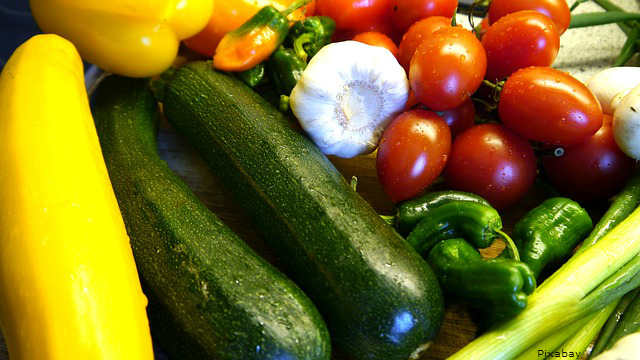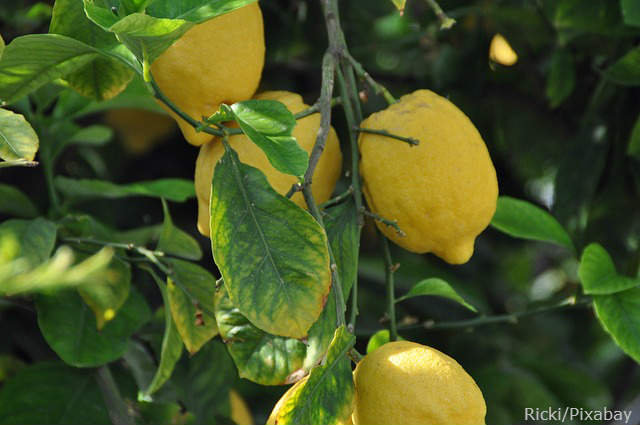A vegetable garden is a great addition to your new or
current home's backyard. It gives you a new hobby and you get to enjoy the fruits of your labor with a
lowered grocery bill and delicious, home-grown vegetables and fruit.

If you're starting your own vegetable garden, or you're looking for a new list of crops to grow in your edible garden, take a look at this list for some inspiration for the best crops for a vegetable garden.
Best vegetables to grow
If you're looking for some easy
vegetables to grow in your backyard, look no further than these listed:
- Sweet corn: It may be too tall from some smaller gardens (corn stalks can grow to be 5 to 10 feet), but you won't find sweeter corn in the supermarket. Try these varieties: Kandy Korn, Sweet Symphony and Silver Queen. They need to be planted in a sunny spot and can be eaten right off the plant when they're picked at their prime ripeness.
- Cucumbers: It's easy to make room for a cucumber plant once you realize the versatility they offer once they're picked. They come in multiple varieties and can be grown in all zones. Try a bush type cucumber or a vining type, but keep in mind that the vining type can grow to about 25 feet.
- Eggplants: Eggplants will need about two to three months of warm days and nights to grow and are great for zones 1-24, H1 and H2. Starting eggplants from nursery plants are much easier to deal with than seeds.
- Peppers: If you like having fresh peppers in your salads or making your own salsa, growing peppers in your vegetable garden is a no-brainer. They grow in all zones, and will continue to produce once you've made your first harvest.
- Tomatoes: While technically a fruit, a few tomato plants in your garden will produce enough for you to eat fresh and can for later months.
- Zucchini: It only takes one or two plants to deliver massively large zucchinis and zucchini blossoms that will continue to provide throughout the season. Its roots will need regular moisture, but keep the stems and leaves dry to prevent diseases. Zucchinis are good to grow in all zones.
Best fruit plants to grow
If you're going to be growing an edible garden, why stop at just vegetables? Add these fruits to your garden for an easy sweet treat.
- Blueberries: For some varieties, the shrubs can grow to be about six feet tall and will need winter chill to bear fruit. The plants have fine roots near the surface so you should avoid cultivating the soil near the base and add a thick layer of mulch to conserve moisture.
- Strawberries: Commercial varieties of strawberries are subjected to many pesticides, so planting and growing your own strawberries allows you to control how they're cared for. Standard strawberries will yield 5 to 10 quarts of berries per 10 feet of matted row.
- Lemon: A dwarf lemon tree is a nice addition to your backyard and in the right climates, certain varieties can bear fruit year-round. Standard market varieties can grow to 20 feet tall. Fruits will ripen only on the tree, and are good for zones
 8, 9, 12-24, H1 and H2.
8, 9, 12-24, H1 and H2.
- Watermelon: This warm season crop can produce round fruits in mini or personal sizes. Keep in mind the vining plants need room to sprawl. Watermelons are good for zones, 1-24, H1, H2.
- Muskmelon: This warm season fruit will need at least four months of steady warm weather in order to produce the sweet cantaloupe in zones 2-24. They can work well in containers at least 18 inches wide and deep.
Best herbs to grow
Herbs are an easy way to experiment with your favorite meals and recipes and they're easy to add to your vegetable garden. They're also easy to
grow in a smaller container garden on your porch, deck or patio.
- Basil: Basil is a warm-season herb and the Genovese variety is easy to add to bruschetta, tomato salad and sauces. The plant has glossy green and fragrant leaves and is an annual herb in all zones (meaning you'll need to replant each year), and in zones 13-17, 19, 23 and 24, it is a perennial.
- Sage: Sage is an easy perennial plant to grow, that produces flavorful and aromatic leaves. Plant them from a nursery plant instead of the seeds with the base of the plant slightly above the ground's surface. Good for zones 2-24, H1, H2.
- Rosemary: - This woody-stemmed plant can grow to a large evergreen hedge in warm areas.
- Mint: Mint is another warm-season herb with many different varieties including spearmint and chocolate mint. They have dark green leaves and are a great addition to drinks, desserts and even salads. Grow mints in a low, wide bowl otherwise, the roots will take over the garden bed. They should be replanted every 3 years and are good for zones A2, A3, and 1-24.